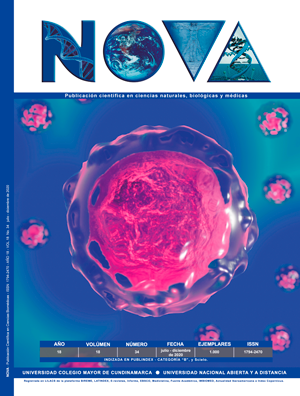NOVA por http://www.unicolmayor.edu.co/publicaciones/index.php/nova se distribuye bajo una licencia Reconocimiento No Comercial- Compartir igual
Así mismo, los autores mantienen sus derechos de propiedad intelectual sobre los artículos,
Declaración de privacidad.
Los nombres y las direcciones de correo electrónico introducidos en esta revista se usarán exclusivamente para los fines establecidos en ella y no se proporcionarán a terceros o para su uso con otros fines.
Resistance to β-lactam Antibiotics and Erythromycin in Bacteria of the Oral Cavity
Introduction. The human microbiota as a source of bacteria and resistance genes is a public health problem. This study researched the prevalence of Gram-negative enteric bacilli resistant to β-lactams and erythromycin resistance in the oral cavity. Methods. A descriptive cross-sectional study was carried out with 193 isolates obtained from the oral cavity of 178 healthy adults who were treated at a Dental Clinic in the city of Cali during 2018. The evaluation of antimicrobial sensitivity was performed in 59 enteric bacilli and 134 EGV and the genes that confer resistance to β-lactam and erythromycin were identified by PCR. Statistical analysis was performed using the SPSS statistical package vs. 25.0. Results. 84.7% of the enteric bacilli presented the MDR phenotype and all presented the bla genes, blaTEM-1 (49.2%) and blaVIM-2 (30.5%) being the most prevalent. EGVs were resistant to erythromycin (38.8%) and clindamycin (28.4%). 18.7% presented the cMLSβ phenotype, 4.5% the iMLSβ and 14.9% were M. The ermB gene was detected more frequently in the cMLSβ, (13.4%) and the mef gene in the M (9.7%).
Conclusion. This study demonstrated the presence of antibiotics and Gram-negative enteric bacilli resistant to antibiotics and carriers of erythromycin resistance genes and bla genes, respectively in the healthy oral cavity. The presence of these bacteria represents a risk to the health of carrier individuals and contributes to the growing epidemic of bacterial resistance.









